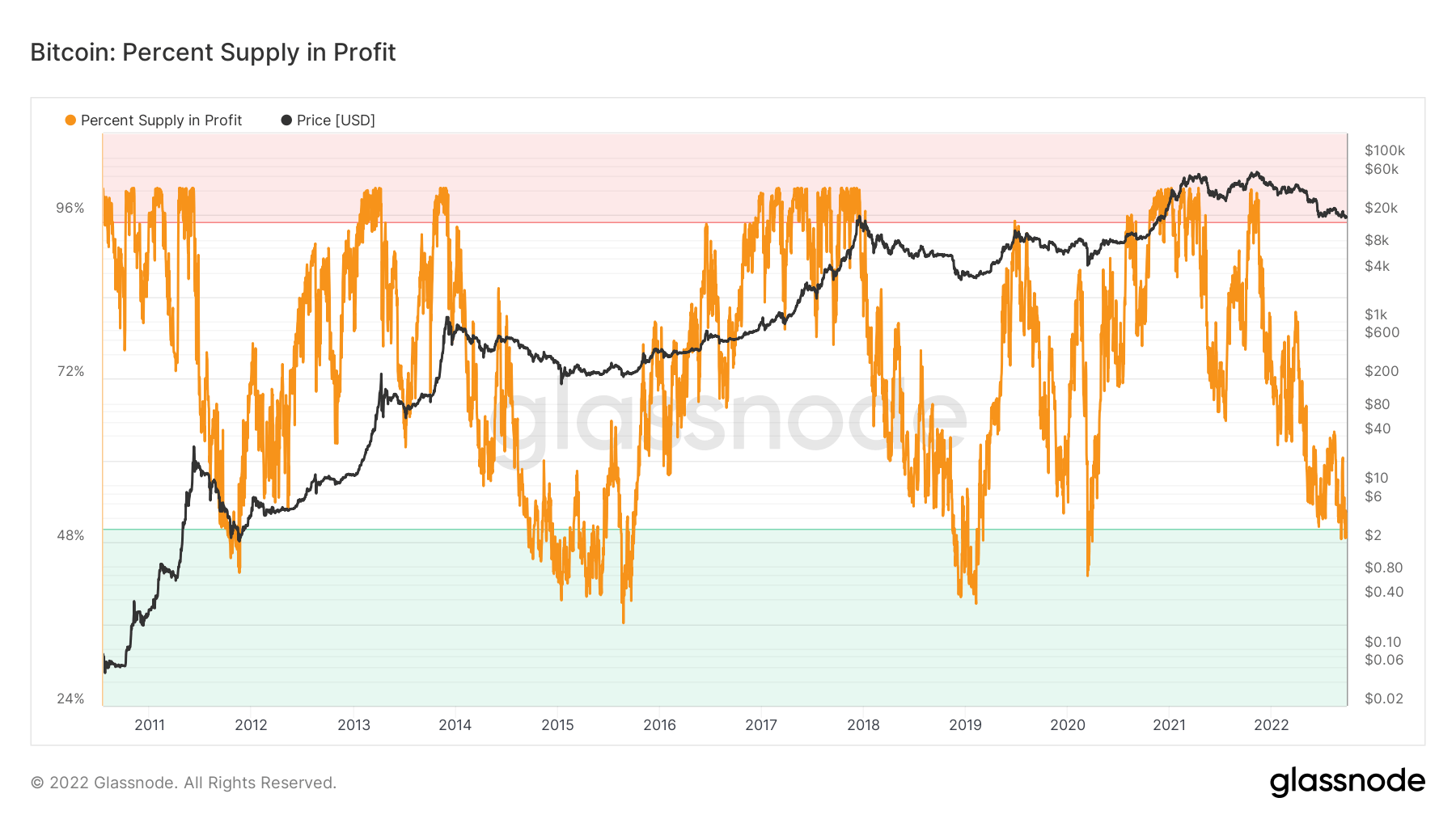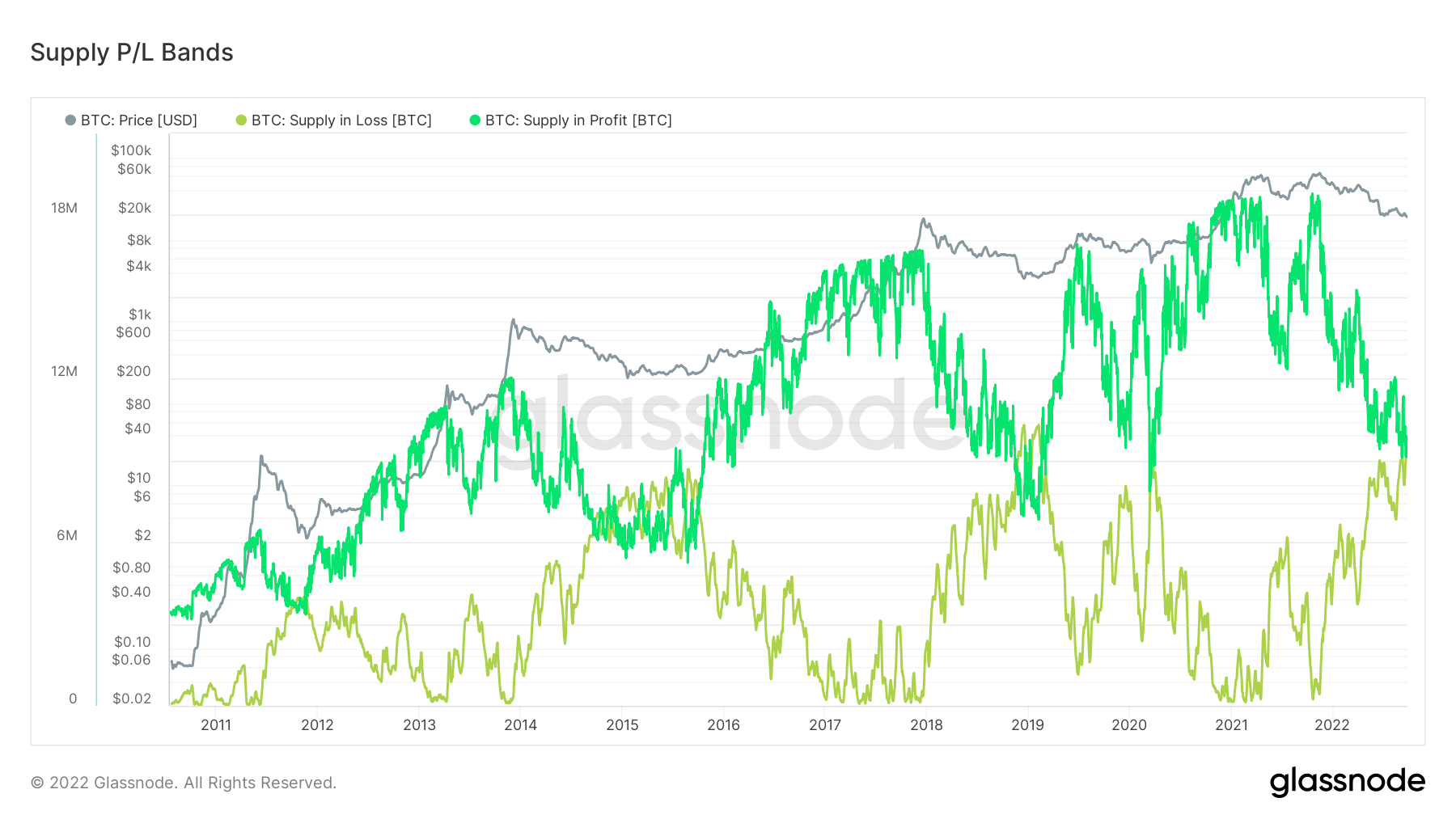Bitcoin on-chain metrics suggest bottom is now in


By looking at certain metrics, an on-chain study published on August 21 suggested that Bitcoin’s bottom is near, but not yet in.
When you revisit these metrics after a month, you’ll see that everything has changed. However, investors should be aware that this does not necessarily mean that the Bitcoin price cannot fall further from its current price.
Bitcoin address share in profit
The percentage of Bitcoin addresses that are profitable refers to the percentage of unique addresses whose average purchase price is lower than the current price.
In previous bear markets, bitcoin address profit margins were consistently below 50%, with readings hovering around 55% last month.
The updated chart below shows that the percentage of addresses in profit is now below the 50% threshold, and the current reading is around 48% in profit.
However, as noted during the 2015 bear market, if this indicator dips to 30%, investor capitulation could continue for months, which could be reflected in a price trend reversal. I have.

Realized value from market value
Market Value to Realized Value (MVRV) refers to the ratio between market cap (or market value) and realized cap (or stored value). By collating this information, MVRV shows when the price of Bitcoin is trading above or below its “fair value.”
MVRV is further divided by long-term holders and short-term holders, with long-term holder MVRV (LTH-MVRV) referring to unused transaction outputs with a validity period of at least 155 days, short-term holder MVRV (STH-MVRV ) corresponds to an unused transaction lifetime of 154 days or less.
The previous cycle troughs were characterized by the convergence of the STH-MVRV and LTH-MVRV lines. This crossing is occurring now, suggesting that the surrender of long-term holders has been achieved.

supply at profit and loss
By analyzing the number of BTC tokens that were lower or higher than the current price when the price last moved, the profit and loss supply (SPL) metric shows the cyclical supply of profits and losses.
The bottom of the market cycle coincides with the convergence of profit line supply and loss line supply. The chart below shows this phenomenon occurring. This means that most of the circulating supply is lost.

While the above metrics show that a bottom is in, it’s important to realize that the bottom could last for months.
In addition, macro conditions that have not been seen in previous bear-to-bull transitions remain an unknown factor.




